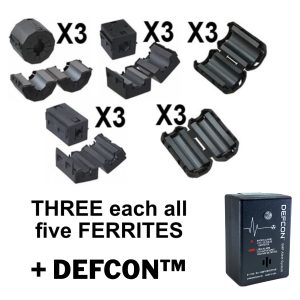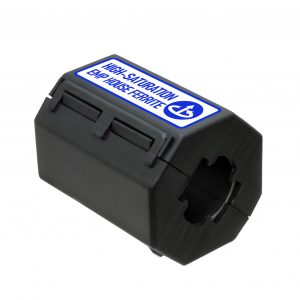Description
What is a Faraday Cage?
A Faraday cage is just a sealed conductive enclosure. It can be any shape or size, and its purpose is to shield its contents from external RF energy. Many people use Faraday cages to shield sensitive electronics from the harmful effects of an electromagnetic pulse (EMP).
Why do I need to test my Faraday cage?
Without testing your Faraday cage, you really have no idea of the level of shielding it provides. This means that the electronics inside may not be adequately protected.
Can’t I just test it with a cell phone or two-way radio?
Unfortunately, no. Cell phones don’t transmit or receive at the right frequency to check for EMP shielding. Also, there’s no way to know how strong the signal is or how sensitive the particular phone is to receiving a signal. Whether or not a cell phone rings inside the cage does not indicate if the cage provides adequate protection from an EMP. Two-way radios transmit at 462 or 467 MHz, which is great for checking EMP shielding. Unfortunately, they transmit too much power and are too sensitive to be used to check shielding effectiveness. Even some of the best Faraday cages will fail to block a good two-way radio signal.
The video below explains why cell phones and two-way radios won’t work.
How do professionals determine shielding effectiveness?
Determining shielding effectiveness requires a signal generator, amplifier, broadband antenna, and spectrum analyzer. It also requires a shielded room so that you aren’t broadcasting illegally. All that equipment could easily cost $250,000.
Can it be done cheaper?
Yes, by carefully lowering the transmit power of two-way radios and shielding the receiver, they can be used to give a good indication of high-frequency shielding effectiveness.
How does this Faraday cage tester work?
Simply set the desired shielding using a few buttons, and place the receiver into the Faraday cage. Next attempt to transmit to it. If the receiver turns on and makes noise, the Faraday cage does not have the desired level of shielding. If it doesn’t turn on, the cage has your desired shielding or more.
How do you know it is accurate?
I checked the accuracy of the Faraday Cage Tester with a very expensive spectrum analyzer. Watch the video below to see how I used it to test a high-quality EMP bag.
What does the kit include?
The kit includes two high-power GMRS radios with charging stands, a variable pushbutton attenuator, an RF-shielded enclosure, and all the necessary RF coupling hardware.
Is it hard to put together?
No. By following the assembly video below, you can have it ready to go in under five minutes. Kits will also ship with written instructions.
Why can you get away with testing at only one frequency (i.e., 462/467 MHz)?
An EMP has energy from about 100 kHz to 1 GHz, but only the high frequency (100s of MHz) energy can couple into small electronics. Testing at 462/467 MHz is therefore an excellent indicator of EMP shielding effectiveness.
What level of shielding is enough to protect from an EMP?
I advise that you try to achieve around 50 dB of shielding. That corresponds to 99.7% electromagnetic field reduction. A 50,000 V/m electric field would be reduced to around 158 V/m, easily survived by most electronics.
If I have less than 50 dB shielding, does it mean my equipment will be damaged by an EMP?
Not necessarily. More shielding offers greater protection, but even modest shielding (e.g., 20 dB) would greatly increase the chances that electronics would survive an EMP.





